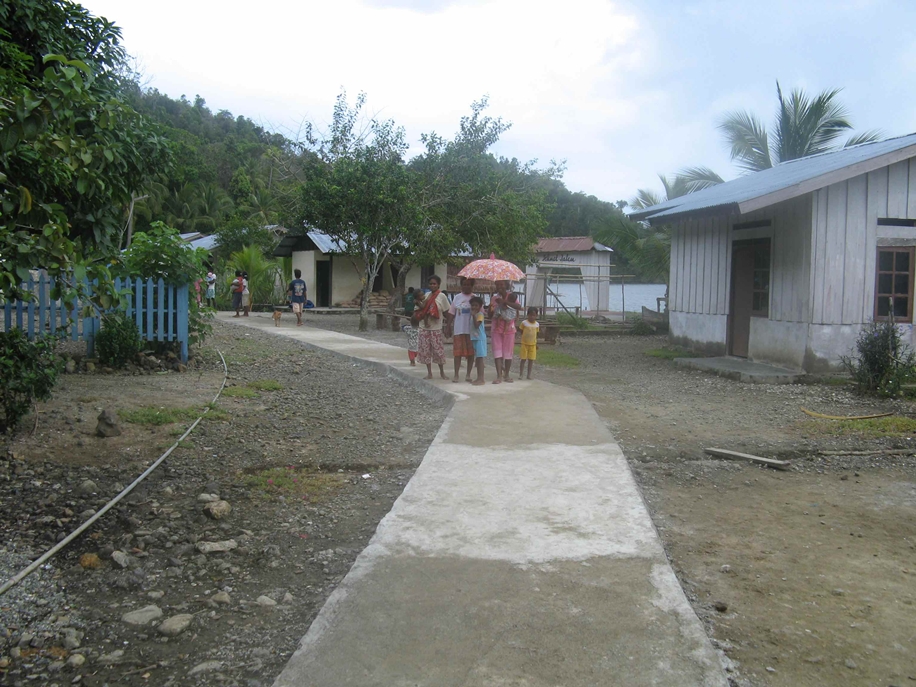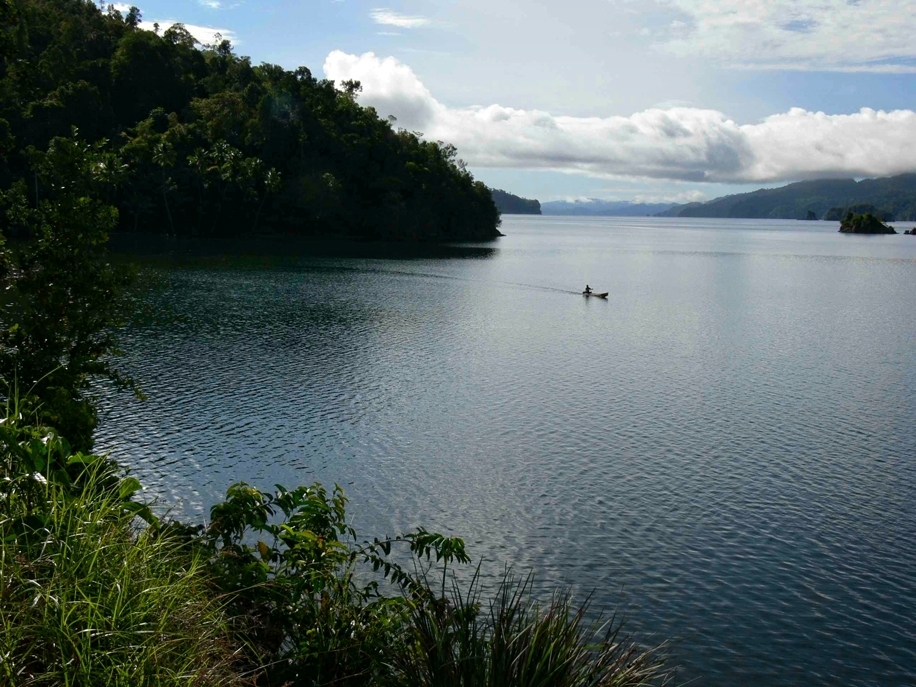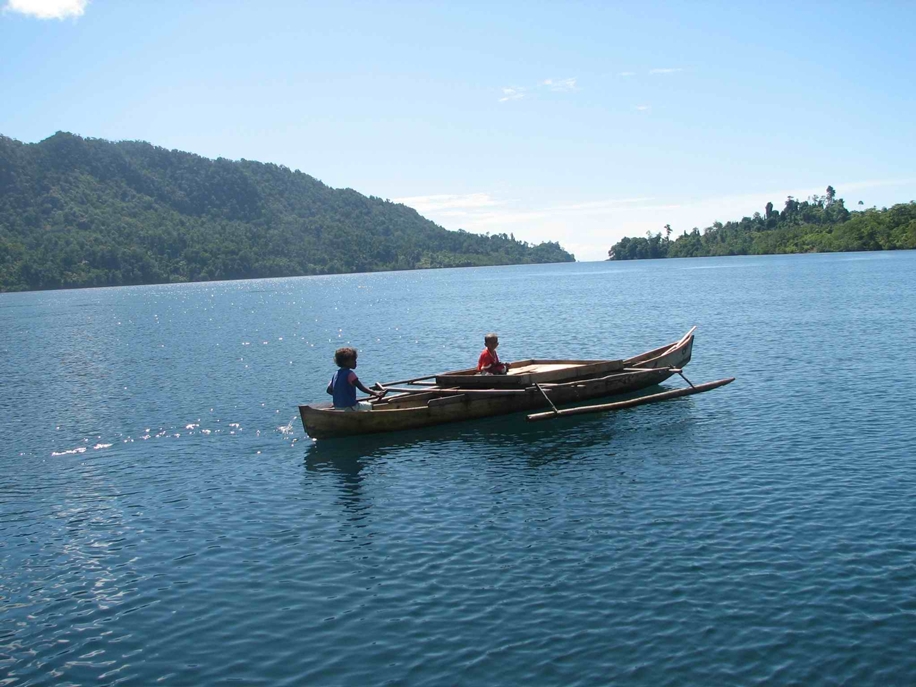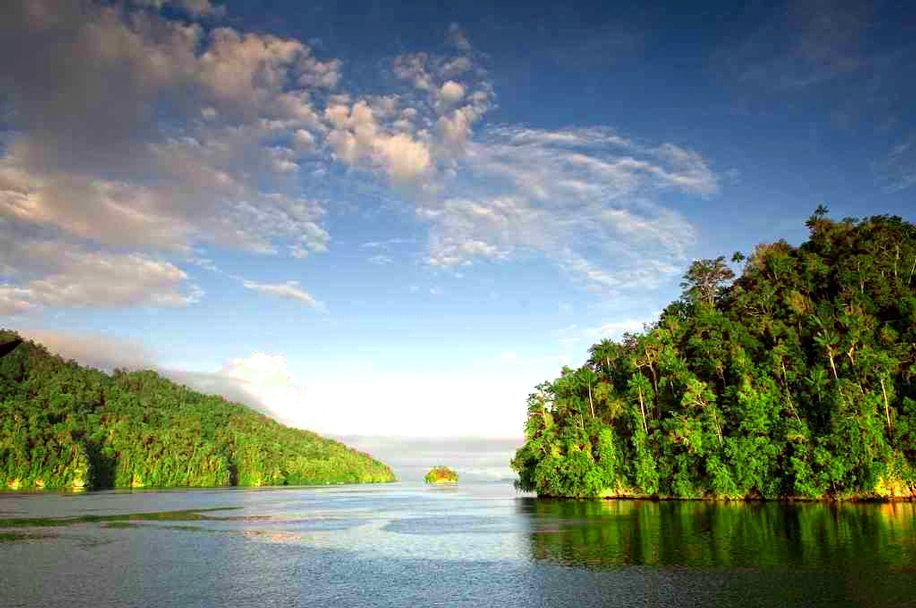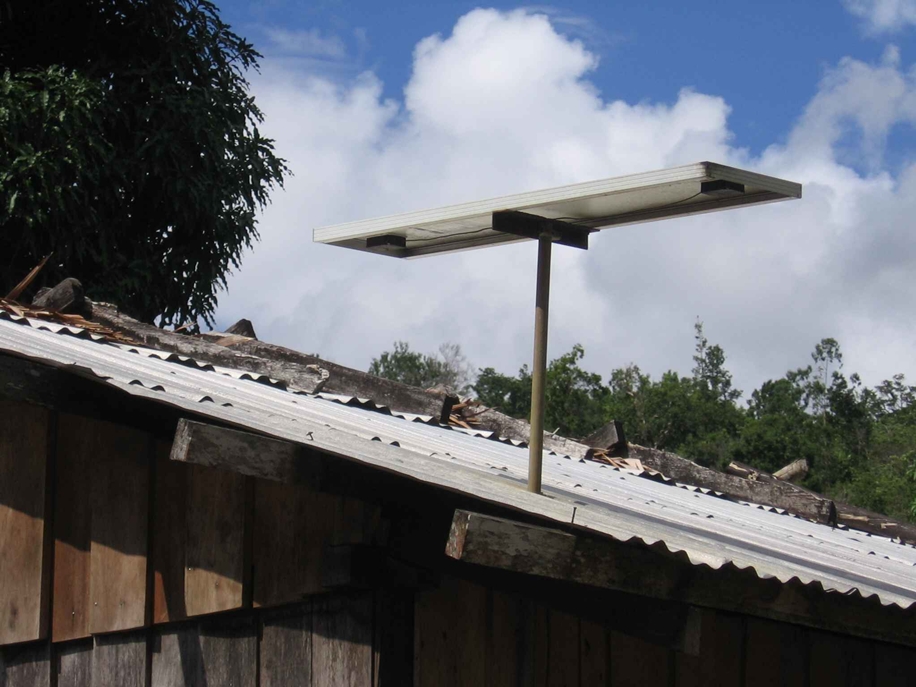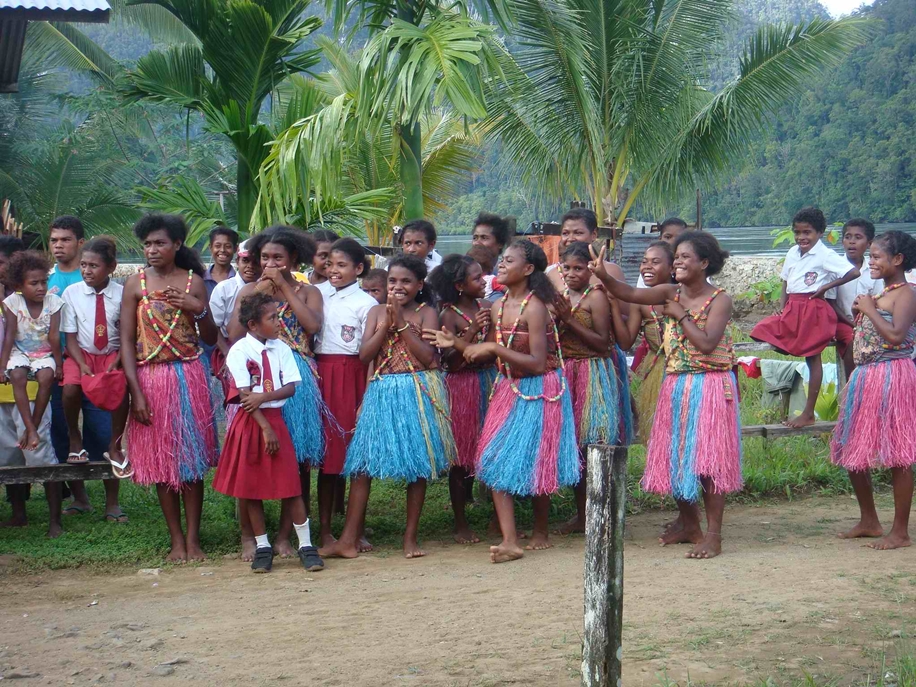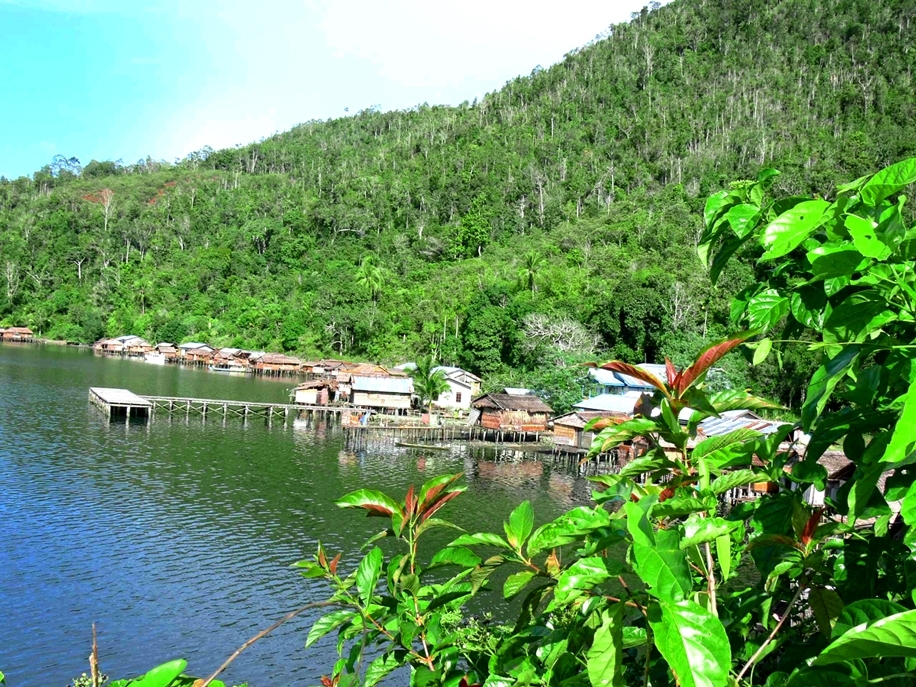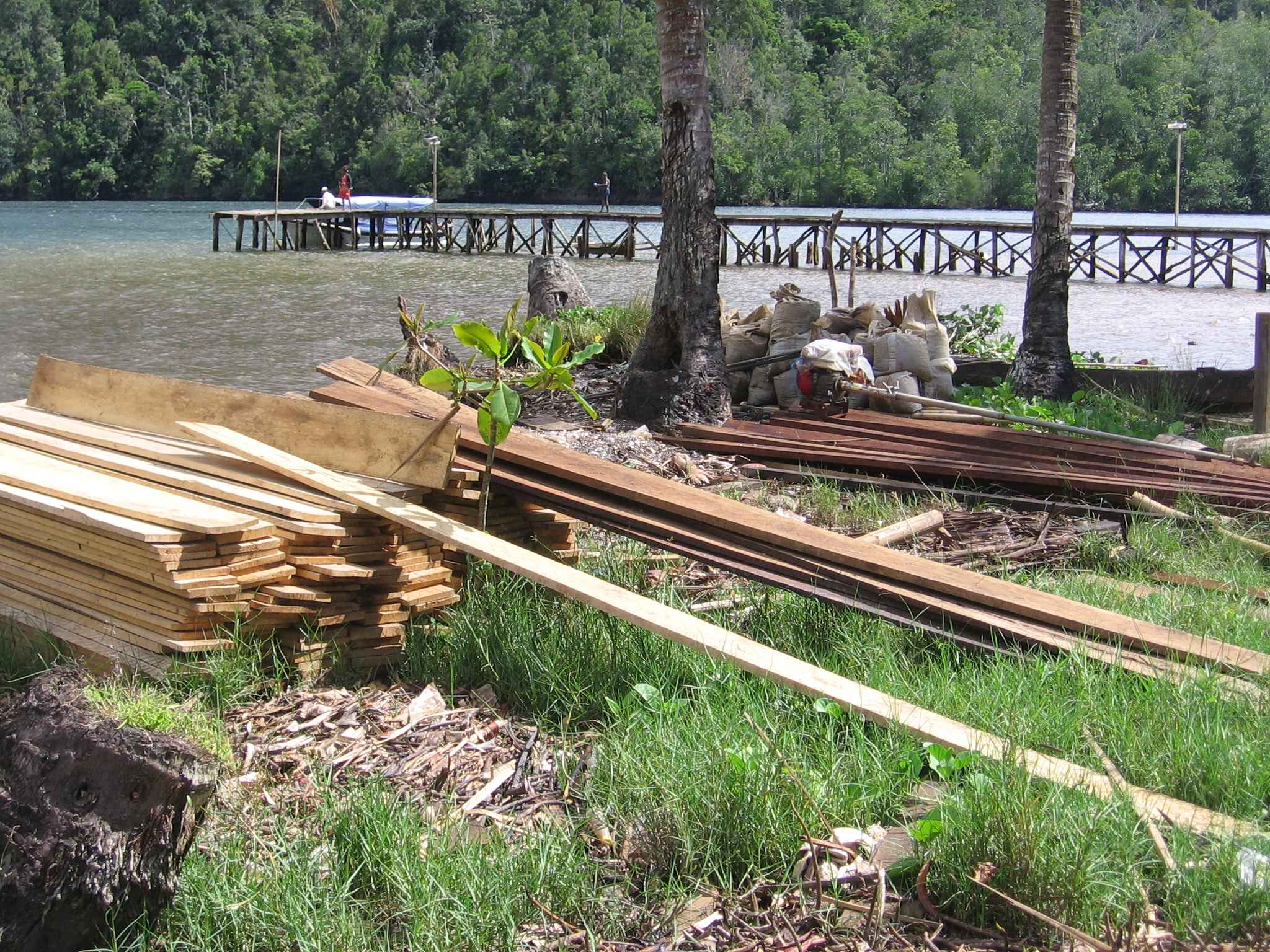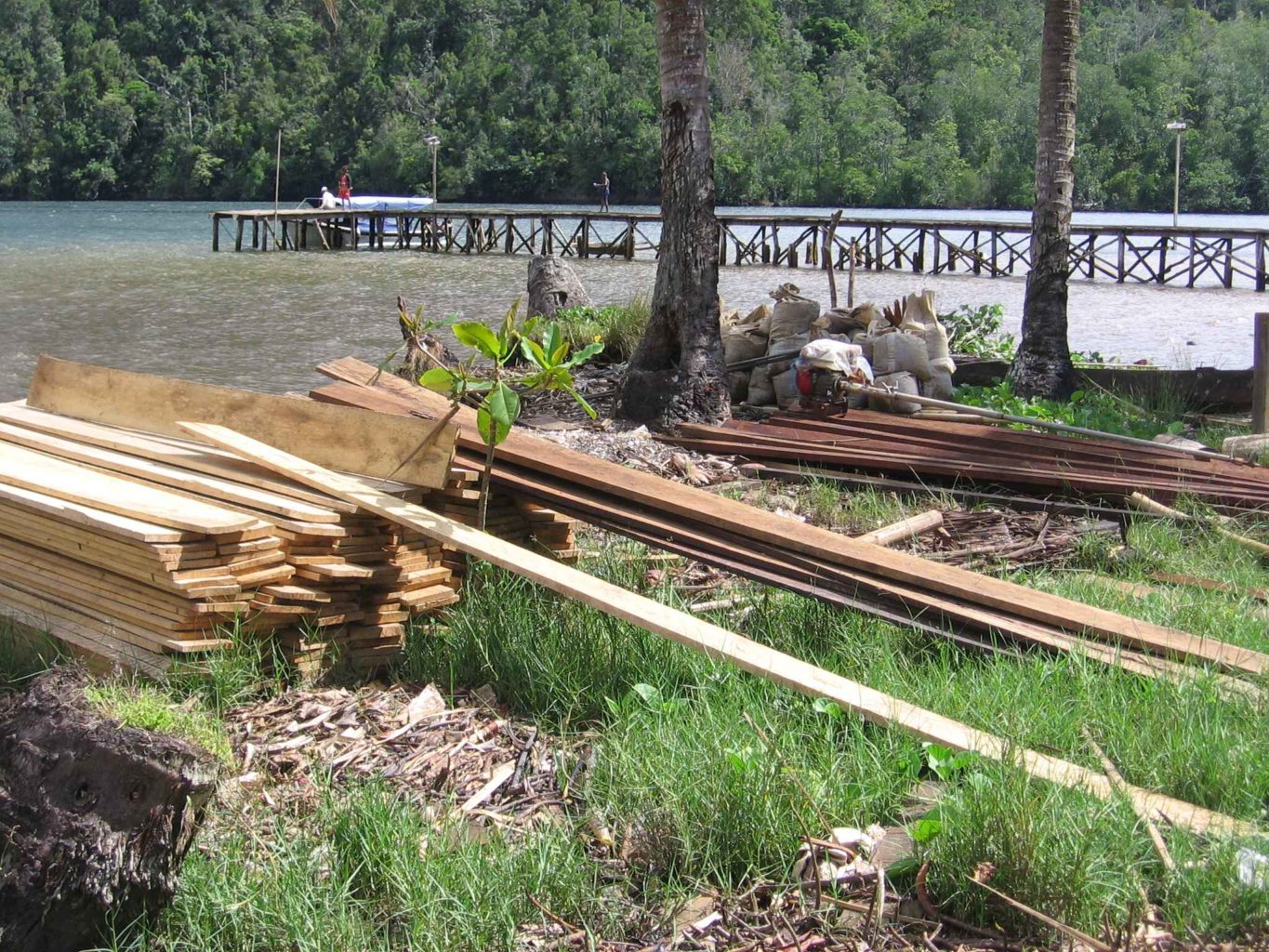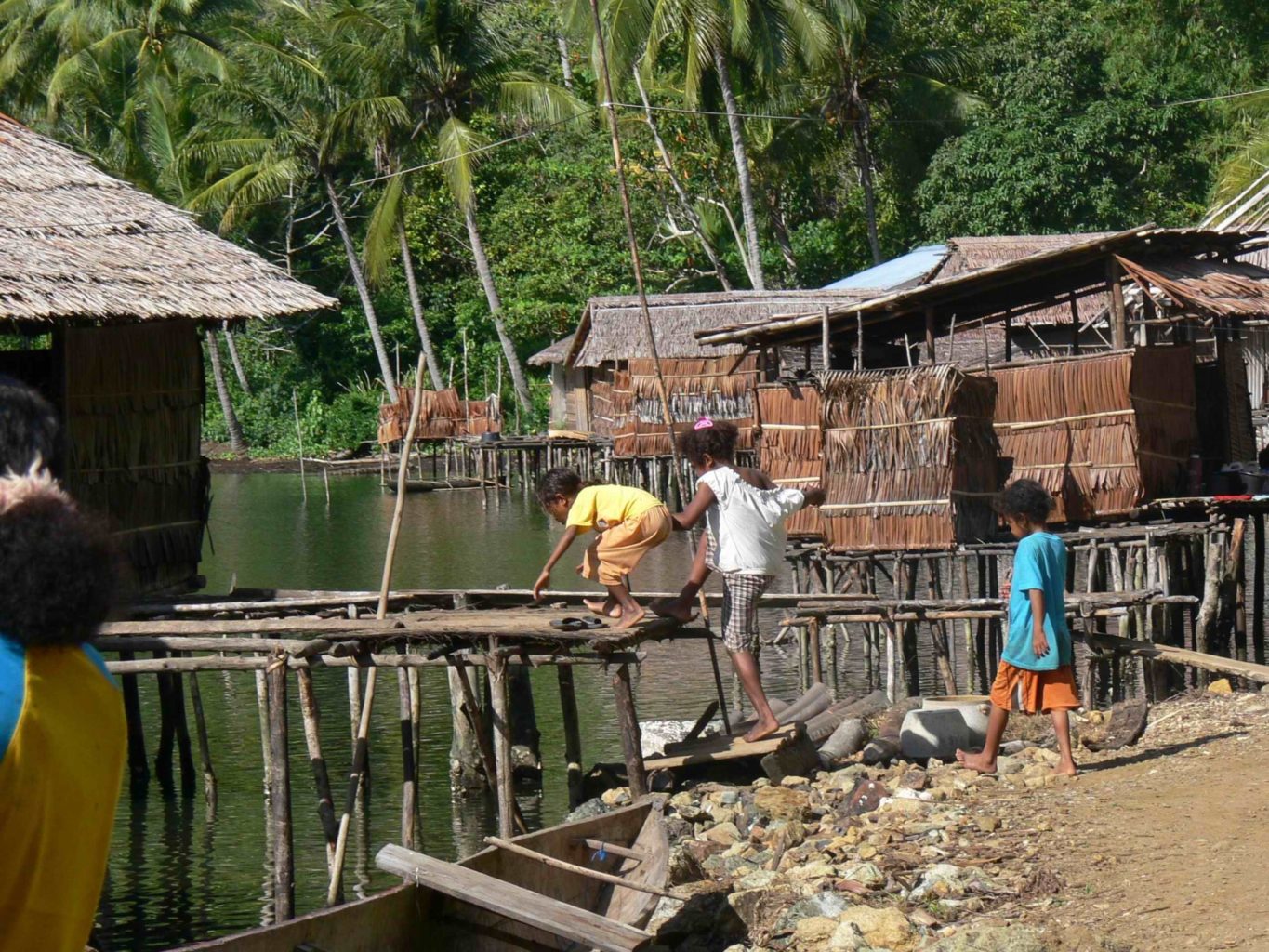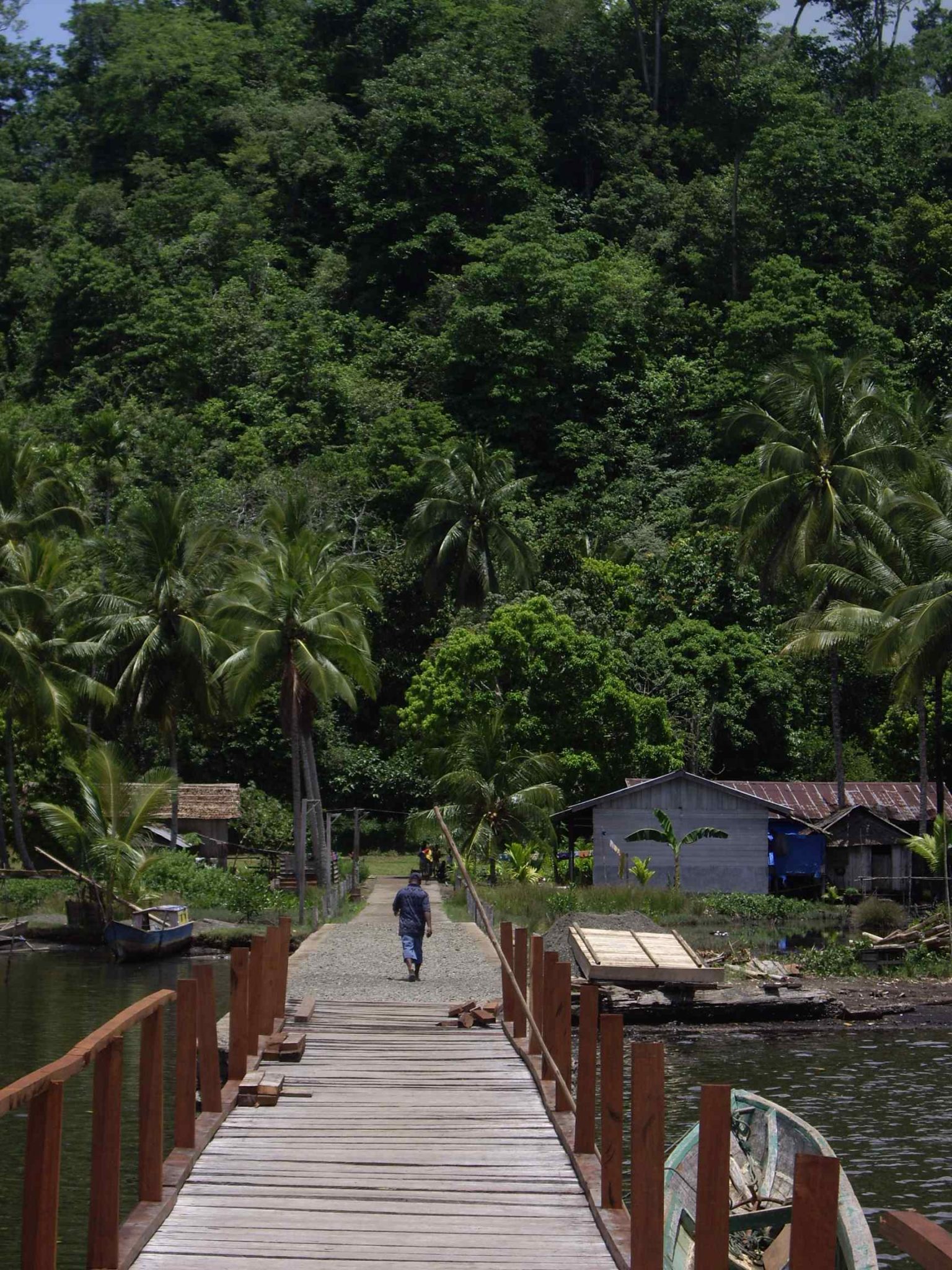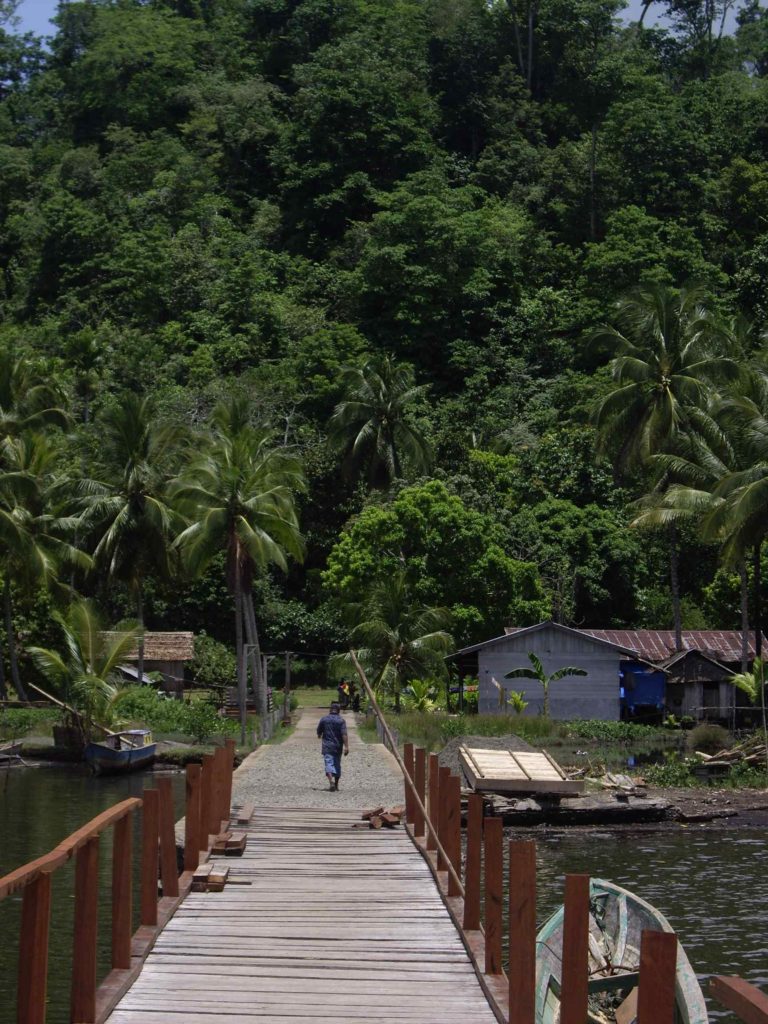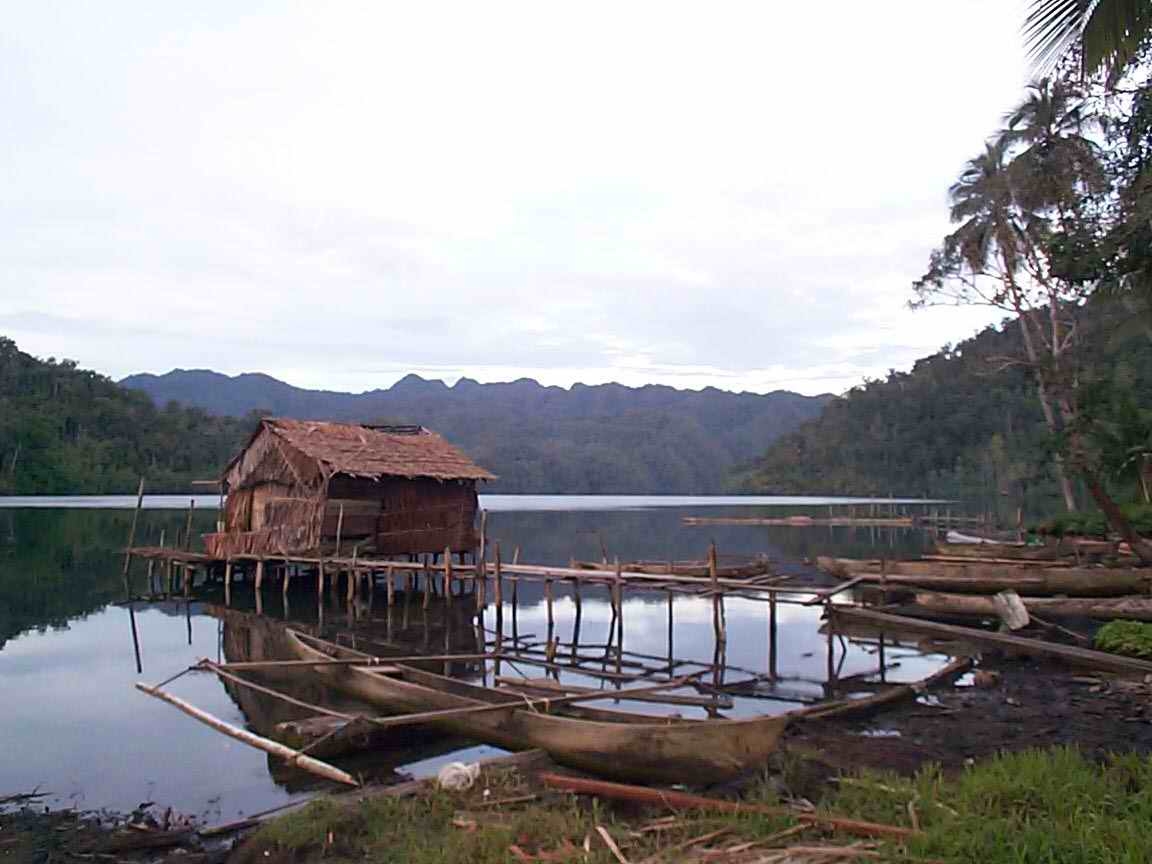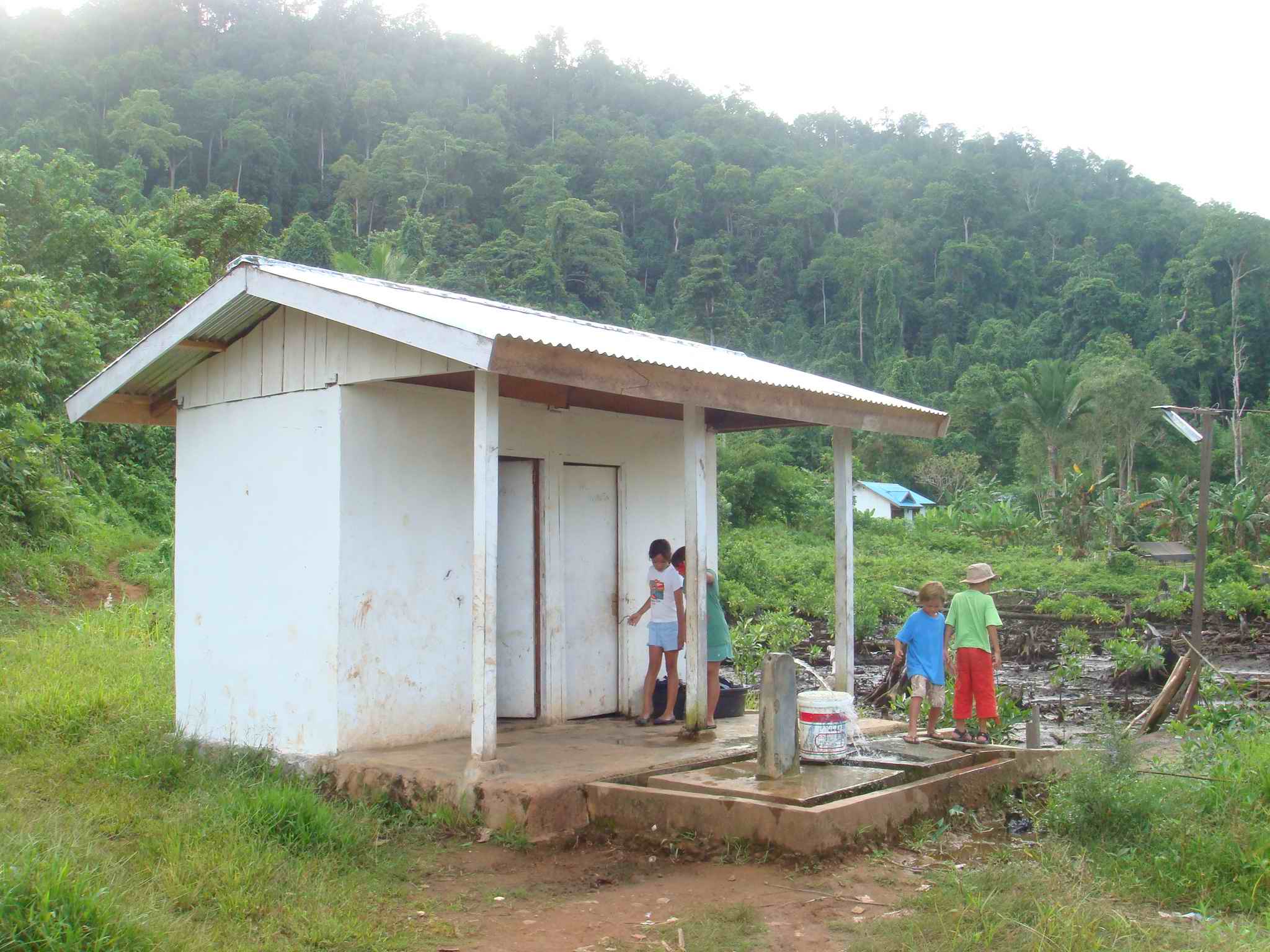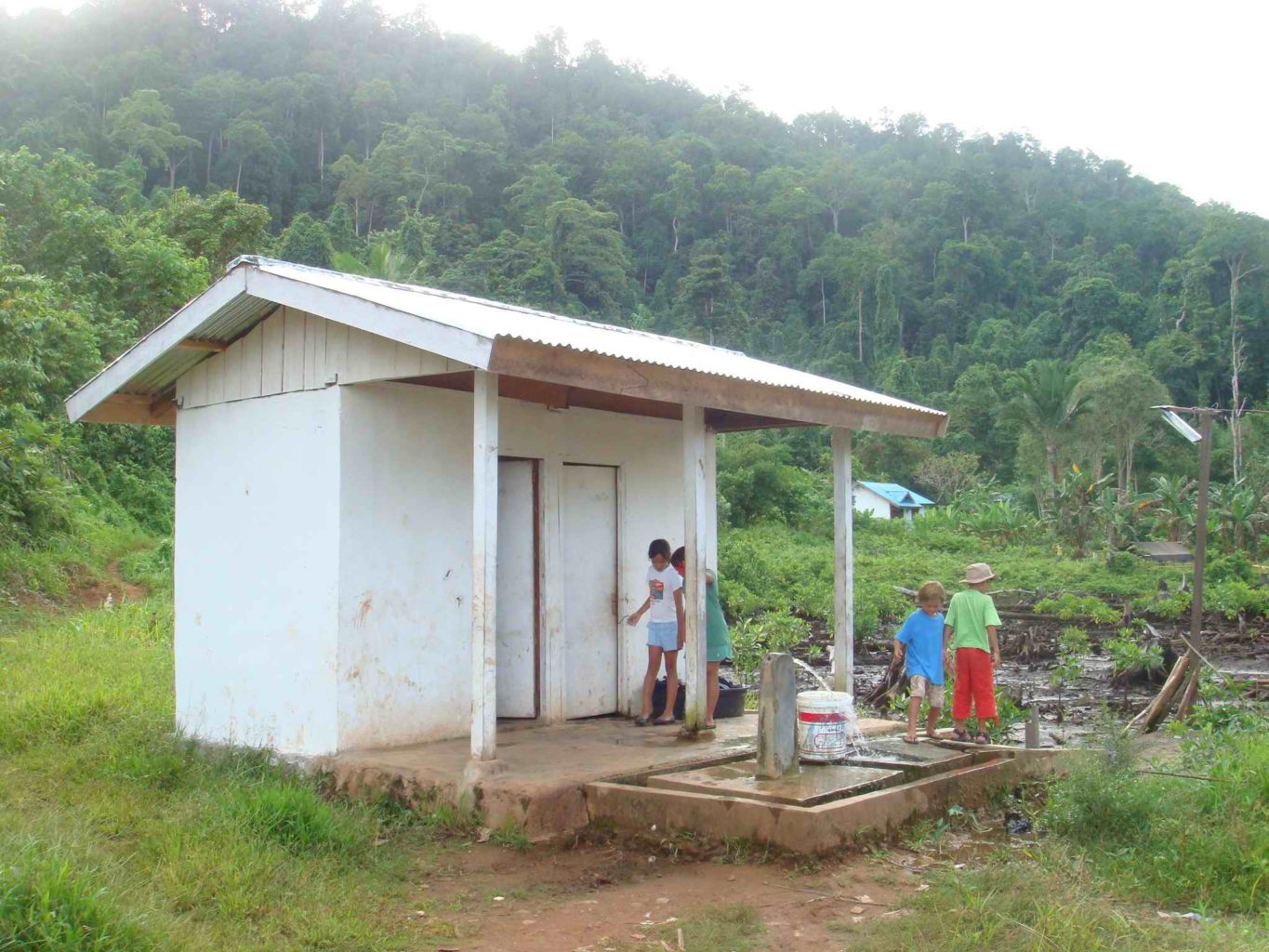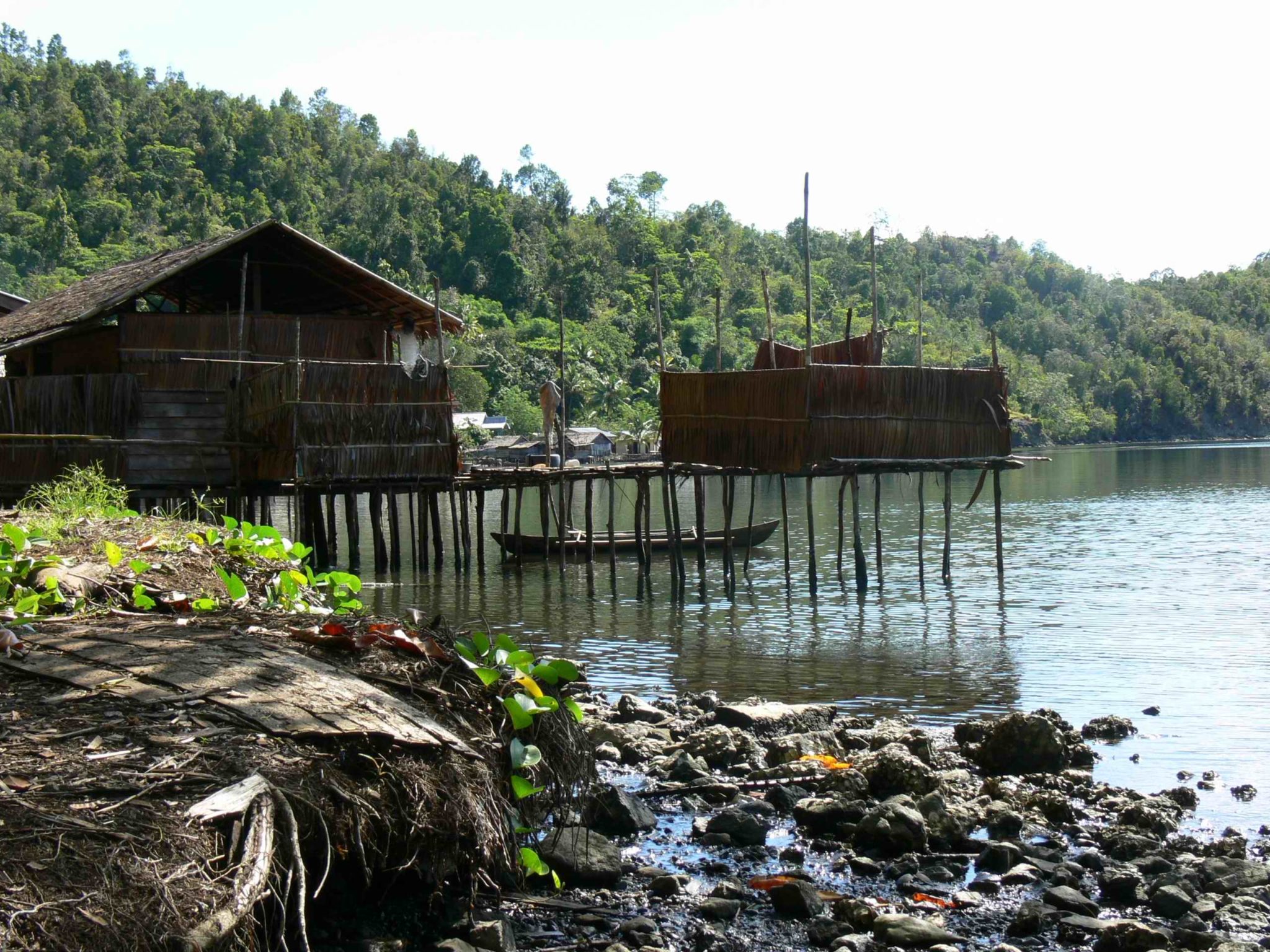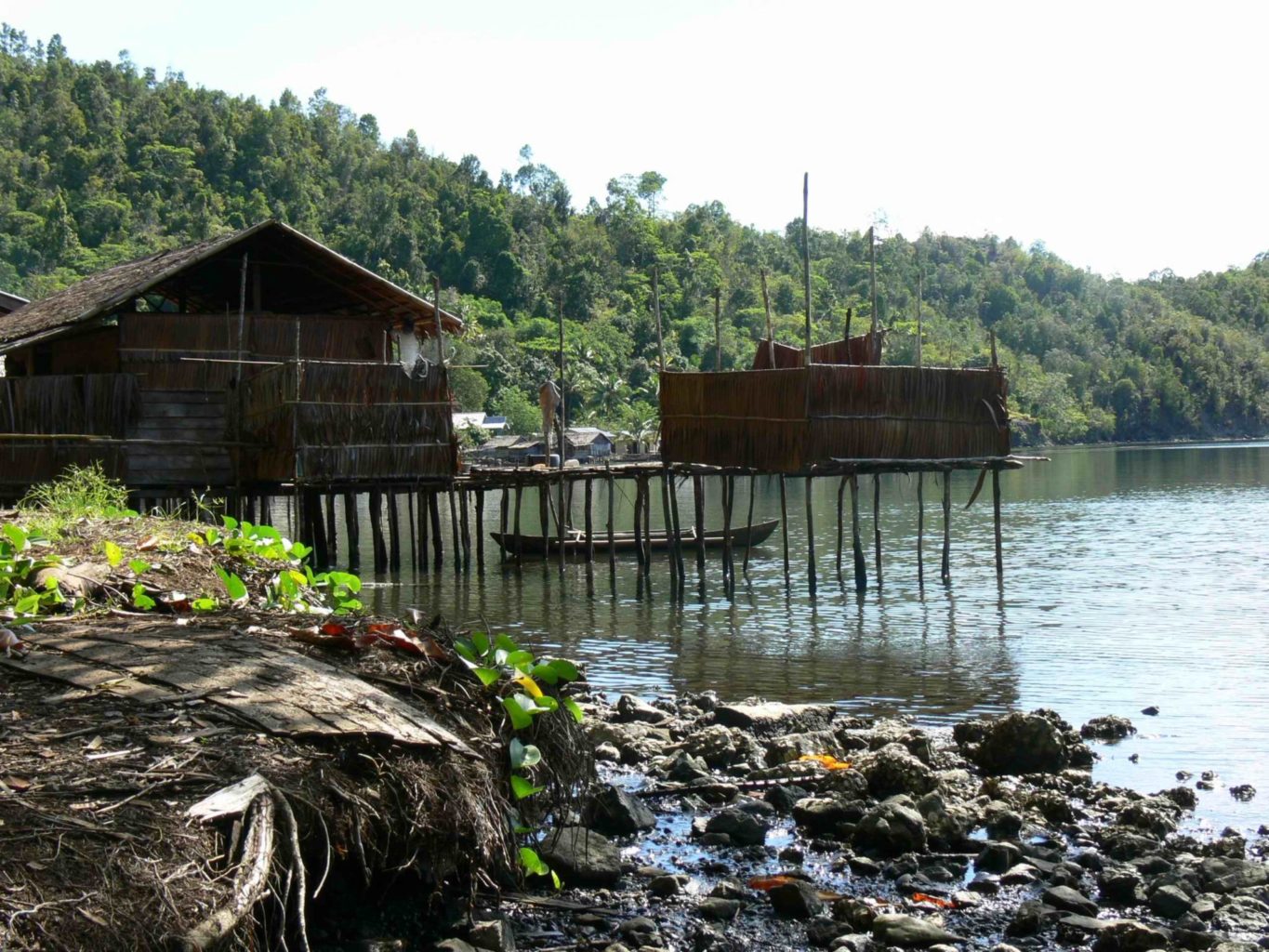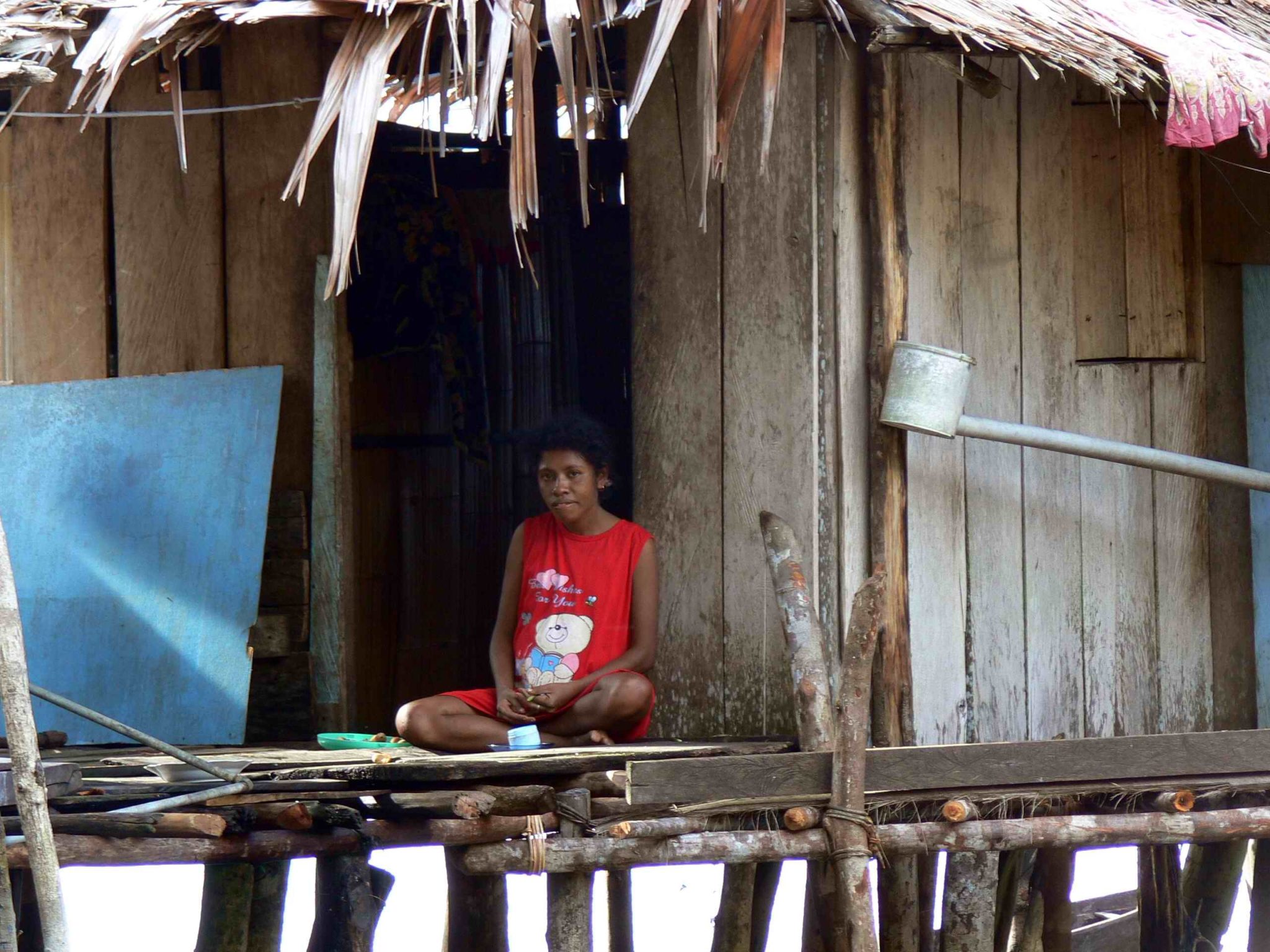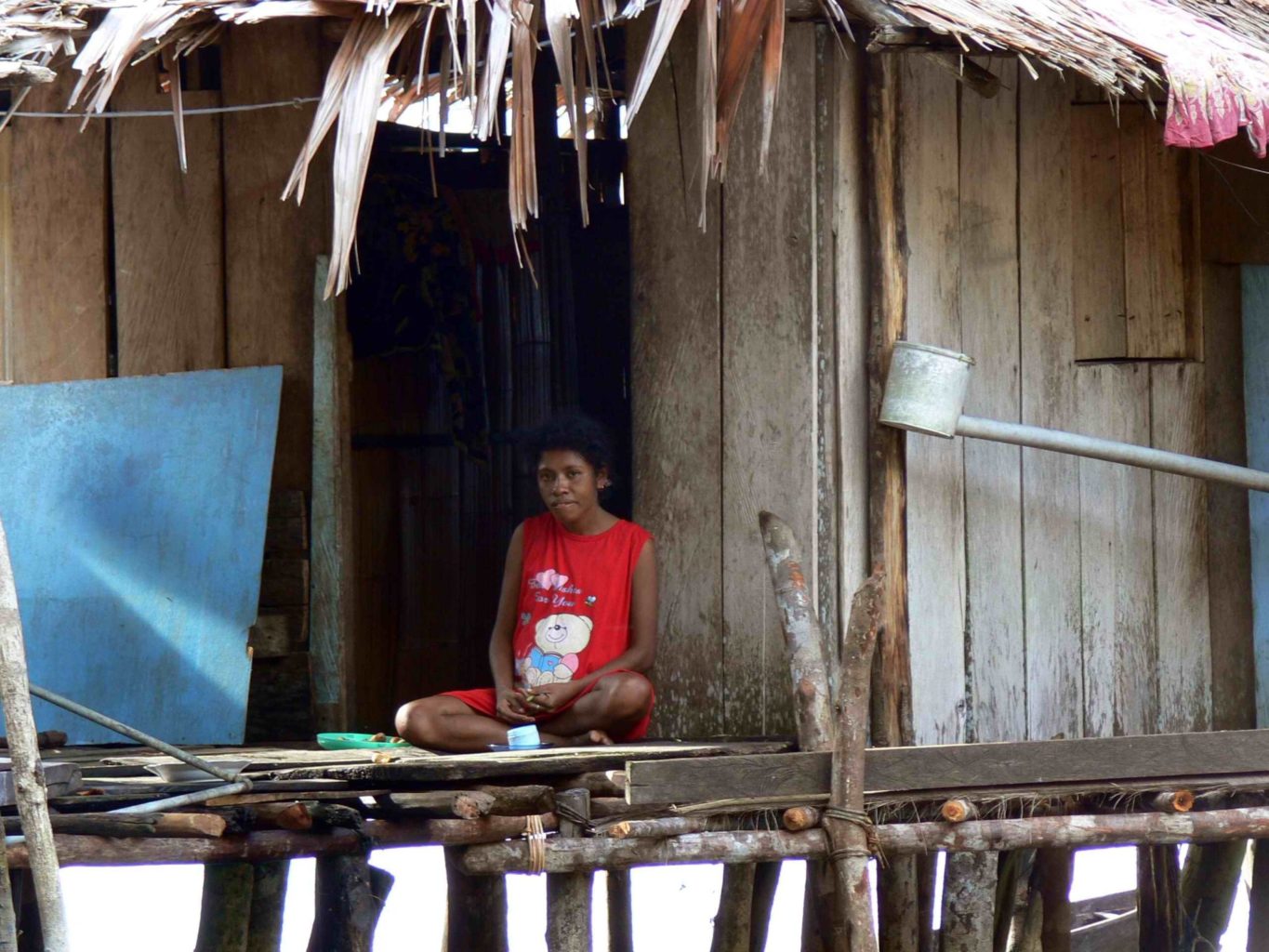Mayalibit is a large bay that deeply notches the island of Waigeo in Raja Ampat, Indonesia. This nutrient-rich, mangrove-fringed bay has long been known as a feeding, breeding, and nursery ground for fishes. It is also home to a school of unidentified species of white dolphin. The area is an important cultural and spiritual area for the indigenous Mayan people.
Recently, the nine villages of Mayalibit declared their 123,553-acre bay a marine protected area. Commercial fishing, netting, shark-finning, and all means of destructive fishing are banned there for at least 10 years. In return, Seacology, with the assistance of Conservation International Indonesia, will support projects tailored to each community’s needs.
Six of the villages (Go, Kabilol, Kalitoko, Lopintol, Waifoy, and Warimak) have requested a paved footpath to allow the villagers better access to freshwater wells and their school. The tiny village of Araway needs solar power to light the village meeting place, as well as a radio so that residents can receive news. The village of Beo has also requested solar power. The largest village, Warsamdin, has no sanitary means of waste disposal and dumps sewage straight into the bay. The Seacology grant will pay tor twenty eco-friendly public washrooms.


